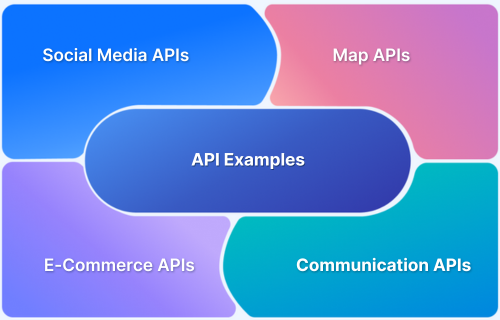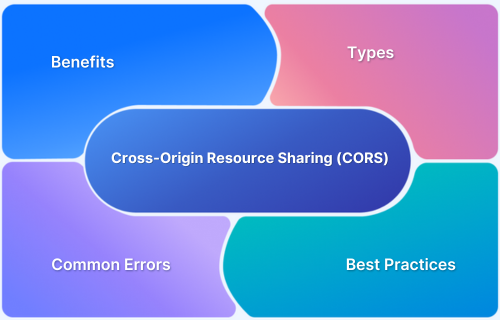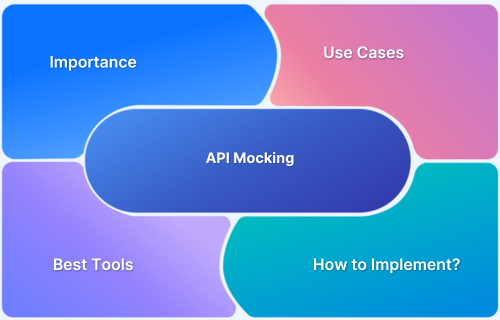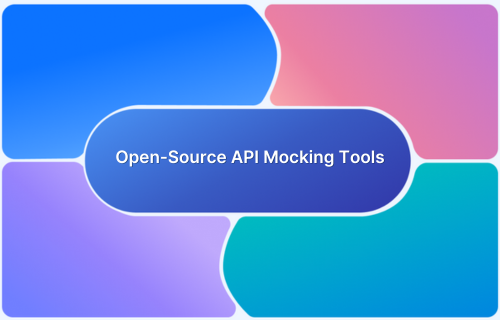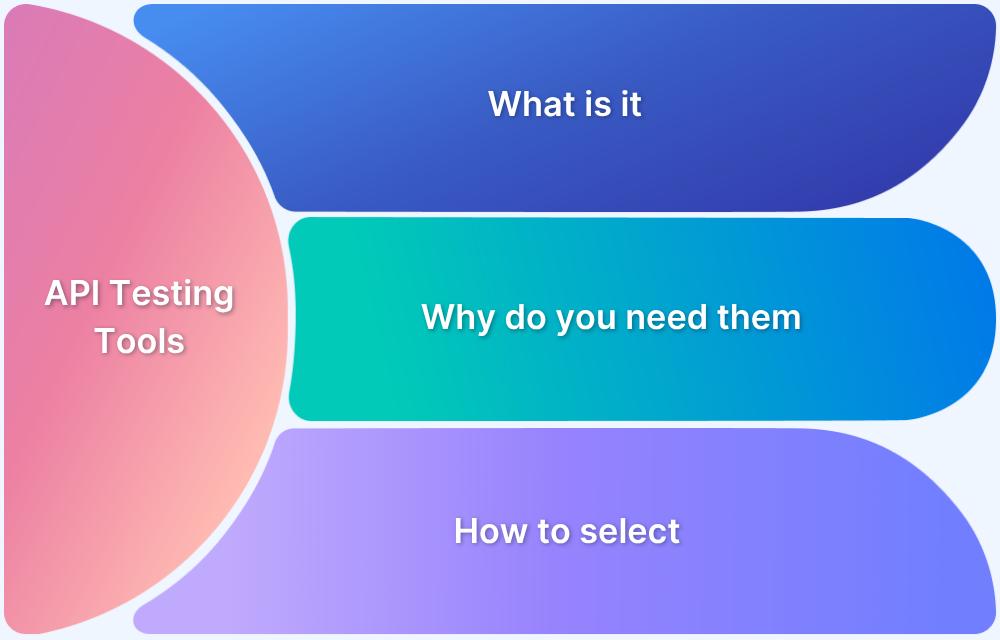GraphQL resolvers are the backbone of any GraphQL server, they define how and where your API fetches the data for each field in a query.
Overview
A GraphQL resolver is a core component that defines how each field in a GraphQL query retrieves its data. It acts as the connection point between the GraphQL schema and the actual data sources, ensuring that every client request is accurately fulfilled.
Key aspects of GraphQL resolvers:
- Connects schema to data sources: Resolvers act as the link between the GraphQL schema and underlying data sources such as databases, APIs, or third-party services. They determine where and how data for a particular field should be fetched.
- Field-specific logic: Each field in a GraphQL query can have its own resolver, allowing developers to define custom logic for how data is retrieved or transformed for that specific field.
- Receives arguments: Resolvers can accept arguments passed from client queries, which can be used for filtering, pagination, or refining the data retrieval process.
- Returns data: After executing the required logic or fetching data from a source, the resolver returns the response in the format expected by the schema. This ensures consistent and predictable outputs.
- Forms resolver chains: In complex queries, resolvers can call other resolvers to handle nested fields, forming a chain of execution that enables GraphQL to resolve deeply nested or relational data efficiently.
This article explores GraphQL resolver, their structure, common patterns, pitfalls, and best practices to help you build efficient and maintainable GraphQL APIs.
Understanding GraphQL Resolver
In GraphQL, a resolver is a function that defines how a particular field in the schema retrieves its data. When a client sends a query, GraphQL doesn’t inherently know where the requested data resides, it relies on resolvers to fetch or compute that information. Each field in a GraphQL query corresponds to a resolver function responsible for returning the appropriate value.
Resolvers serve as the execution layer of a GraphQL server, bridging the gap between the schema and actual data sources such as databases, APIs, microservices, or even static values. When a query is executed, the GraphQL engine delegates each field’s resolution task to its corresponding resolver, which processes the request and returns data in the structure defined by the schema.
For example, if a client requests a user’s profile details, the resolver determines how to fetch that user’s data, whether from a database query, an external API call, or a cache. This separation of schema from>
Types of Resolvers
GraphQL resolvers can be categorized based on the type of operation they handle within the schema. Each type serves a specific purpose in processing and delivering data to the client, ensuring that queries, mutations, and subscriptions function seamlessly.
1. Query Resolvers: Query resolvers handle read operations defined under the Query type. They are responsible for fetching and returning data when a client requests information, such as retrieving users, products, or posts. These resolvers typically interact with data sources like databases or APIs to collect the required information.
2. Mutation Resolvers: Mutation resolvers manage write operations defined under the Mutation type. They handle actions that modify data, including creating, updating, or deleting records. In many cases, mutation resolvers also implement validation, error handling, and access control logic to maintain data integrity.
3. Field Resolvers: Field resolvers define how individual fields within a type are populated. They are useful when a field requires specific logic or data from a different source. By controlling how each field’s data is fetched or transformed, field resolvers enable fine-grained control over data presentation.
4. Nested Resolvers: Nested resolvers come into play when a query involves related or hierarchical data. They allow GraphQL to resolve relationships between entities, such as fetching posts for a user or comments for a post. These resolvers form a chain of execution, ensuring that data dependencies are resolved step by step.
5. Subscription Resolvers: Subscription resolvers enable real-time data updates by maintaining a continuous connection between the client and the server. Whenever specific events occur, like data creation or updates, these resolvers push the new information to subscribed clients, supporting dynamic and interactive applications.
Anatomy of a Resolver Function
A GraphQL resolver function follows a well-defined structure that determines how it processes a client’s request and returns the appropriate data. Understanding each component of a resolver is essential for designing efficient and predictable GraphQL APIs.
A resolver function typically has the following signature:
(fieldName: (parent, args, context, info) => { … })Each parameter in this function serves a specific role in the resolution process:
- Parent (or Root): The parent parameter represents the result of the previous resolver in the chain. In top-level queries, it is often undefined or an empty object. For nested fields, it contains the resolved data from the parent field, allowing resolvers to access and build upon previously fetched information.
- Args (Arguments): The args object contains all the arguments passed by the client in the query. These arguments are typically used for filtering, sorting, or fetching specific records, for example, retrieving a user by ID or paginating a list of results.
- Context: The context parameter is a shared object available to all resolvers during a single query’s execution. It is often used to store data that is globally relevant to the request, such as authentication details, user sessions, data loaders, or connections to databases and APIs. Proper use of context ensures that cross-cutting concerns like authorization and caching are handled efficiently.
- Info (Resolve Info): The info parameter provides metadata about the query’s execution state. It includes details about the field name, path, return type, and the entire query structure. Advanced use cases, such as query optimization or custom logging, often rely on this information to improve resolver performance.
Together, these components enable resolvers to handle both simple and complex queries in a structured manner. By leveraging parent, args, context, and info effectively, developers can create robust>
Common Resolver Patterns
Resolvers can be implemented in various ways depending on the complexity of the schema, data requirements, and application architecture. Recognizing common resolver patterns helps developers write consistent, efficient, and maintainable GraphQL code.
Below are some of the most widely used patterns in resolver design:
1. Root and Field Resolvers
This is the most basic and common pattern, where top-level queries (root resolvers) handle fetching main data entities, and field resolvers take care of related or nested data. For example, a User resolver might return user data, while the nested posts field resolver fetches posts written by that user.
This pattern promotes modularity and clarity by separating responsibilities across different resolver layers.
2. Chained or Nested Resolvers
In more complex schemas, resolvers often depend on one another, for instance, when resolving a user’s posts and then the comments on those posts. Each resolver in the chain takes the output of the previous resolver as input.
This pattern helps handle hierarchical or relational data structures effectively, ensuring each level of the query tree is resolved in sequence.
3. Delegated Resolvers
Sometimes, a resolver may delegate its>
Common Issues and Debugging Techniques
Despite their flexibility, GraphQL resolvers can often become sources of bugs, inefficiencies, or unexpected behaviors if not carefully designed and tested. Understanding the most common issues, and how to debug them effectively, is crucial for maintaining a stable and performant GraphQL API.
1. Over-fetching and N+1 Query Problem
A frequent issue in GraphQL implementations occurs when resolvers trigger multiple redundant database queries, especially in nested relationships. For example, fetching posts for each user individually can result in dozens of unnecessary calls.
Debugging Tip: Use query logging or performance monitoring tools to identify repetitive queries. Implement batching and caching techniques (e.g., with DataLoader) to minimize redundant data fetching and improve performance.
2. Incorrect Parent-Child Data Flow
Resolvers that rely on data from parent resolvers can sometimes fail if parent data is missing or incorrectly structured. This often leads to undefined or incomplete responses in nested queries.
Debugging Tip: Use console logs or query inspection tools to trace resolver execution order. Ensure that parent resolvers return the data structure expected by their child resolvers.
3. Improper Argument Handling
Errors often occur when arguments passed in a query are not properly validated, typed, or handled. This can lead to runtime errors or unexpected data responses.
Debugging Tip: Use schema validation tools and input types to enforce argument structure. Log argument values during resolver execution to verify they are being received and processed correctly.
4. Context Mismanagement
Resolvers frequently rely on the context object for authentication, database connections, or shared utilities. If context is not properly initialized or is mutated incorrectly, it can lead to inconsistent behavior or security issues.
Debugging Tip: Centralize context creation logic and avoid mutating context within individual resolvers. Verify context data using simple logs or debugging middleware.
5. Performance Bottlenecks
Complex queries or poorly optimized resolvers can significantly slow down response times. This often stems from unnecessary computation, inefficient data joins, or lack of caching.
Debugging Tip: Use tracing tools like Apollo Tracing or GraphQL Playground’s performance insights to pinpoint slow fields. Optimize data retrieval logic and introduce caching where possible.
6. Error Propagation and Silent Failures
Without proper error handling, resolver failures may not surface clearly to clients, making debugging difficult.
Debugging Tip: Implement structured error handling using custom error classes or GraphQL error extensions. Always provide meaningful error messages that help trace issues without leaking sensitive system information.
By proactively addressing these issues and applying systematic debugging techniques, developers can ensure that their GraphQL resolvers remain reliable, performant, and easy to maintain, even as schema complexity grows.
Best Practices for Resolver Design
Designing effective resolvers is crucial for maintaining clarity, performance, and scalability in a GraphQL API. Following established best practices helps ensure that your resolver logic remains efficient, consistent, and easy to maintain as your application grows.
- Keep Resolvers Focused and Lightweight: Resolvers should contain only the logic required to fetch or transform data for their specific field. Business logic, data processing, and validation should reside in separate service layers to promote modularity and easier maintenance.
- Leverage Context for Shared Data and Authentication: Use the context object to pass shared information such as authentication tokens, user roles, or database connections. This avoids repetitive code across resolvers and ensures consistent access control and request-level data management.
- Implement Batching and Caching: Avoid redundant data fetching by using tools like DataLoader to batch similar requests and cache results during query execution. This technique minimizes database or API calls, improving performance and reducing latency.
- Validate Arguments and Inputs: Always validate incoming arguments to ensure type safety and prevent invalid data operations. Combine GraphQL’s type system with additional validation libraries when necessary to enforce rules and improve error clarity.
- Handle Errors Gracefully: Implement structured error handling to capture and return meaningful error messages. Use GraphQL error extensions to provide context (e.g., error codes or request IDs) while ensuring sensitive information isn’t exposed to clients.
- Optimize for Performance and Query Depth: Monitor query complexity to prevent deeply nested or computationally heavy requests from degrading performance. Set query depth limits and introduce query cost analysis to maintain API responsiveness under load.
- Ensure Consistent Resolver Patterns and Naming: Maintain uniform resolver structure, naming conventions, and coding style across the schema. Consistency helps new developers understand resolver behavior quickly and supports better collaboration in larger teams.
Enhancing Resolver Testing and Debugging with Requestly
Requestly accelerates resolver quality work by letting you shape network behavior around your GraphQL server, without changing a line of code. Here’s how it helps:
- Deterministic reproduction of bugs: Craft precise upstream/downstream responses (including error bodies and edge-case payloads) so elusive resolver failures can be reproduced reliably and fixed with confidence.
- Isolate resolver logic from flaky dependencies: Replace or stabilize external services your resolvers call, removing noise from rate limits, schema drifts, or intermittent outages to focus on the resolver’s behavior.
- Exercise auth and multi-tenant paths: Override headers, tokens, and tenant identifiers to validate field-level authorization, role-based branches, and organization-specific rules across the same query.
- Probe resilience under adverse networks: Inject latency, bandwidth throttling, and timeouts to verify batching (e.g., DataLoader), retries, fallbacks, and user-facing error surfaces for slow or failing dependencies.
- Validate contract assumptions: Mutate request/response shapes (missing fields, nulls, type changes) to ensure resolvers fail fast with clear errors, or degrade gracefully-when upstream contracts shift.
- Test pagination and selection-set handling: Tweak query variables and selection sets to confirm resolvers return correct slices, cursors, and projections, and don’t over-fetch beyond what clients ask for.
- Record, replay, and share scenarios: Capture a problematic flow once, then replay it locally or in CI to prevent regressions; share the same scenario with teammates for consistent triage.
- Speed up root-cause analysis: Correlate modified network conditions with resolver metrics/logs to quickly pinpoint the field or dependency causing latency spikes or null cascades.
Used this way, Requestly becomes a lightweight harness around your GraphQL stack-making resolver testing faster, more thorough, and far easier to automate.
Conclusion
GraphQL resolvers form the core of how data flows through a GraphQL API, acting as the crucial link between a well-defined schema and real-world data sources. By understanding their structure, patterns, and common challenges, developers can design APIs that are both powerful and predictable.
Applying best practices, such as keeping resolvers modular, leveraging context effectively, and using batching and caching techniques, ensures scalability and maintainability as applications evolve. Tools like Requestly further elevate the testing and debugging experience, making it easier to validate resolver performance, error handling, and edge cases in realistic environments.
Ultimately, mastering resolver design is about achieving balance: writing functions that are efficient yet flexible, simple yet robust. When done right, resolvers transform GraphQL APIs into reliable, high-performing data layers that deliver precisely what clients need-with speed, clarity, and control.



